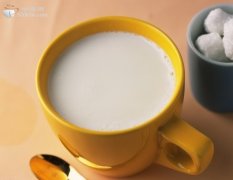Coffee knowledge Coffee producing area Ethiopia

The birthplace of coffee-Ethiopia.
The coffee tree originated in Ethiopia, which was originally a wild plant here. The name "coffee" comes from the Ethiopian town of "Kaffa". In fact, many coffee trees in Ethiopia are still wild plants, and the coffee grown on this coffee tree is full-grained and slightly alcoholic. Humans may have known how to grow coffee trees as early as the 9th century, but who, how and why is still a mystery. The local legend in Ethiopia is that coffee began to be used by monks to keep a clear head when praying at night.
Today, Ethiopia is an important coffee producer, with about 12 million people engaged in coffee production and a major exporter of Arab coffee beans in Africa. The high-quality coffee here is of excellent quality and is worth looking for.
Various forms of coffee cultivation can be found in Ethiopia: everything from wild coffee forests and semi-developed land to traditionally operated plots to modern plantations. About 50% of the coffee is grown more than 1500 meters above sea level.
Harrar coffee is the highest growing area of all coffee in Ethiopia. Hara coffee can be divided into long coffee beans and short coffee beans, of which long coffee beans are the most popular. It has a soft taste, with

Wild flavor of the wine, and slightly sour taste, after drinking unforgettable. Djimmah Coffee is wild at an altitude of more than 1200 meters and is sold under two brands: Limu Coffee and Babeka Coffee. Other coffee names include Sidamo coffee from central China, which is sold under the brand name Yirgachaffe, and coffee from Lekempti, which has a unique flavor. Jima and Cedamo beans have an unpleasant appearance but a good taste.
One of the rarest Ethiopian coffee beans on the market is Ilgachafi, which is exported to Japan and Europe but is rarely seen in the United States. This is because Dallmeyer, the German coffee roaster owned by Nestl é, has established close ties with the growers of Ilgachafi coffee, thus obtaining the largest single supply of the coffee beans.
The flavor of Ethiopian coffee is difficult to describe. It is neither strong nor sour. Therefore, it is not suitable for deep baking, otherwise it will easily lose its characteristics.
In terms of characteristics, Ethiopian coffee is somewhat similar to the famous mocha coffee. Of course, high-quality Ethiopian coffee can be compared with the best coffee from all over the world, including its considerable price.
Ethiopia has the highest domestic consumption of coffee in Africa. In the countryside, it is often drunk with a vanilla called Health of Adam: the new coffee beans are roasted and mashed with the vanilla, then mixed and drunk in a small teacup, which is often served with pancakes to extract the sweet pepper flavor from the pancakes.
The coffee industry is managed by the Ethiopian Coffee Company (the Ethiopian Coffee Marketing Corporation, or ECMC), which controls 90 per cent of the export market. It is possible that control of Ethiopian coffee companies is about to be relaxed to give greater local power, a move that will benefit the coffee industry as a whole, especially individual businessmen.

Important Notice :
前街咖啡 FrontStreet Coffee has moved to new addredd:
FrontStreet Coffee Address: 315,Donghua East Road,GuangZhou
Tel:020 38364473
- Prev

Coffee knowledge Coffee Origin Ivory Coast
One of the largest producers in the world. C ô te d'Ivoire te dlvoire has never produced the best quality coffee, and it rarely comes from Arabian coffee trees. In the early 1980s, it was the world's third-largest coffee producer, with an annual output of 5 million bags. Even today, it is still the fifth largest coffee producer in the world, with an annual output of 4.4 million bags. With regard to the production of Robbins special coffee
- Next

Coffee knowledge Coffee producing area Cameroon
Deep-roasted coffee beans for espresso. The cultivation of Arabica coffee trees in Cameroon (Cameroon) began in 1913 as the Blue Mountain Coffee from Jamaica, but the country also produces large quantities of Robbins coffee. The quality and characteristics of Cameroon coffee is similar to that of coffee from South America. The best coffee in the country comes from Bamileke and Bamoun in the northwest.
Related
- Beginners will see the "Coffee pull flower" guide!
- What is the difference between ice blog purified milk and ordinary milk coffee?
- Why is the Philippines the largest producer of crops in Liberia?
- For coffee extraction, should the fine powder be retained?
- How does extracted espresso fill pressed powder? How much strength does it take to press the powder?
- How to make jasmine cold extract coffee? Is the jasmine + latte good?
- Will this little toy really make the coffee taste better? How does Lily Drip affect coffee extraction?
- Will the action of slapping the filter cup also affect coffee extraction?
- What's the difference between powder-to-water ratio and powder-to-liquid ratio?
- What is the Ethiopian local species? What does it have to do with Heirloom native species?

